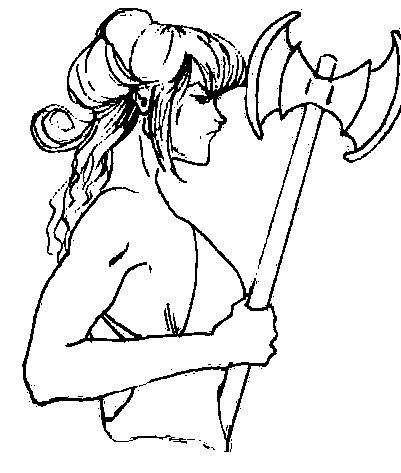LGBT symbols one can’t not know (part 1)
- vietpride
- Jun 29, 2015
- 2 min read
Look for these signs to find like-minded people and businesses.
The rainbow flag

Participants carrying and dancing under a giant rainbow flag at Viet Pride 2014’s After-Rally party
Two years ago, when we were printing some rainbow flags for Viet Pride, the printing company asked if it was for a Buddhist ceremony.
No. No, it was not.
Actually, this is probably the most well-recognized symbol amongst the LGBT community, having been waved at almost every LGBTQI events since its inception in 1978.
Some trivia on the colors’ meaning:
Red for life,
Orange for healing,
Yellow for sun,
Green for serenity with nature,
Indigo for harmony
Violet for spirit.
The original version in 1978 also included:
Hot pink for sex, and
Turquoise for art
In Vietnam, you can encounter rainbow flags being draped, waved, handed out as stickers or badges, worn, etc., at pretty much all LGBTQI events.
The labrys

Whether used as an ancient symbol for the Greek civilization or as the modern-day’s symbol for lesbian movements, the labrys represent female divinities (Picture: DevianArt/Atanapotnia)
Originally a symbol for female prowess/strength/independence/self-sufficiency and widely associated with Greek goddesses, it’s only fitting that the lesbians movements of the world have adopted this symbol as their own.
You might have heard of AsianLabrys.com, one of the most prominent forums and news outlets for Vietnamese lesbians.
The lambda

Lambda has a wide variety of uses, one of which is symbolizing gay and lesbian rights (Photo: familyresearchinst.org)
First used in a LGBT campaign in 1970, the Lambda symbol was officially recognized as a symbol for gay and lesbian rights by the International Gay Rights Congress in December, 1974. There are many theories on the roots of this decision:
It signifies unity under oppression
It’s a symbol of “energy” in physics
Its Roman interpretation is “the light of knowledge shining into the darkness of ignorance”
It appeared on the shields of Spartan warriors, who we all know were gay
It signifies the entire Sparta, for Sparta’s Ancient Greek name begins with a lambda.
Here in Vietnam, though, it hasn’t been used much by the LGBT community.
The transgender symbol

You might have seen this in the form of a tattoos or accessories somewhere – it most likely signifies that the person carrying it is transgender.
(Photo: Wikipedia)
No matter what angle you look at it from, it will be correct. That’s the intention behind the transgender symbol’s design. This symbol combines elements of all gender symbols and forms one spectrum of genders.
The bisexual flag

The two color stripes overlap in the middle to form the bisexual flag
(Photo: Wikipedia)
The first flag of its kind was introduced on December 5, 1998. It was designed by artist Michael Page. In designing the Bi Pride Flag, he selected the colors and overlap pattern of the 'bi angles' symbol. The stripes were reported to have the following meaning:
Pink: sexual attraction to the same sex only (gay and lesbian)
Blue: sexual attraction to the opposite sex only (straight)
Lavender (in the middle): sexual attraction to both sexes (bi).
At iSEE’s “BUBU Town” event to celebrate IDAHOT day in May, stickers of the flag were passed around to raise awareness of bisexuality.
(to be continued)







Comments